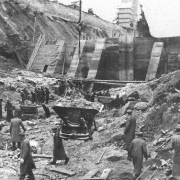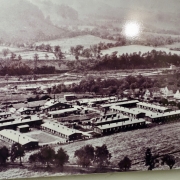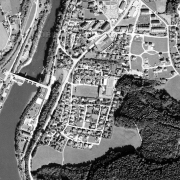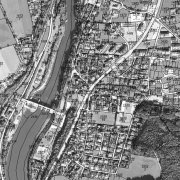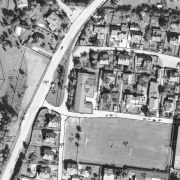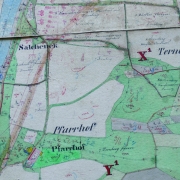Satellite Camp Ternberg
Gründung des Konzentrationslagers
Ternberg Subcamp was a separate part of the so-called “Wohnlager 75”, where POWs, forced labourers, foreign civilian workers and domestic workers were lodged. It was established on 15 May 1942.
Lokalisierung
Ternberg Subcamp was located outside the town, and above what is Eisenbundesstraße today. The premises of the camp sat between Eisenstraße, the old vicarage, and the town proper. The only building that is still completely preserved of the camp is the old kitchen barrack.
Informationen über die Häftlinge
The highest number of prisoners recorded was 406; the prisoners were all Spanish Republicans. César Orquion, also called “Caesar”, was Camp Senior - as he had been in Vöcklabruck, the camp from which he had been transferred to Ternberg. 14 Spanish prisoners are known to have died during their imprisonment. There were also several deaths among the POWs, the forced labourers, the convicts from Garsten prison, and among the civilian workers.
Zwangsarbeit
The prisoners were assigned to work on the construction of the powerplant in Ternberg and they worked on road construction sites. The construction of the powerplant started in October 1941, and at first, POWs, convicts, civilian foreigners and very few domestic workers were assigned to work there. As of mid-May, prisoners of the subcamps of Vöcklabruck and Ternberg were brought to the construction sites.
Bewachung
SS-Obersturmführer (Senior Assault Leader) Kieserle was camp leader at first, and later replaced by the notorious camp leader of Ebensee Subcamp, Anton Ganz, who managed Ternberg camp from late 1942 to May or June 1943.
Schließung
The construction works were ceased in September 1944 due to the economic situation that the war brought about, and on 18 September 1944, Ternberg Subcamp was shut down. The remaining 395 prisoners were transferred back to Mauthausen Concentration Camp. When construction of the powerplant was ceased, about 80% were completed.
Gedenken und Erinnern
The Ennskraftwerke AG, who took over the powerplant after World War II, completed its construction in 1949. A memorial plaque can be found on the wall of the former kitchen barrack; the Catholic youth association of the Weyer deanship has set up a memorial site in the cellars of the barrack in 2008. In 2015, a monument was erected outside the kitchen barrack to commemorate the victims of the death marches through the Ennstal valley. Once every ear, usually in early October, a memorial celebration is held, organised by the local initiative near the former Ternberg Subcamp. Information about it can be found in the programme for commemoration - and liberation ceremonies [1].

